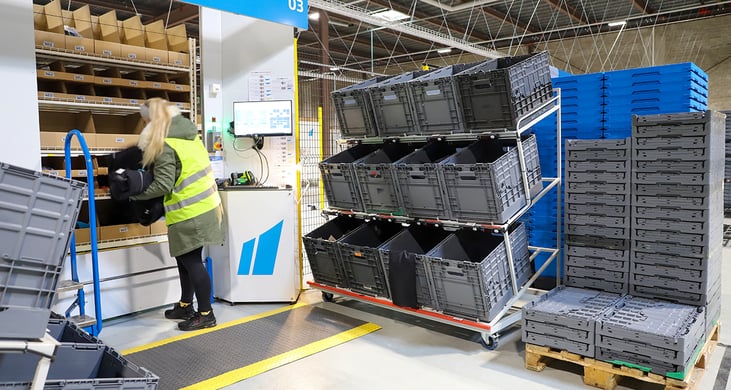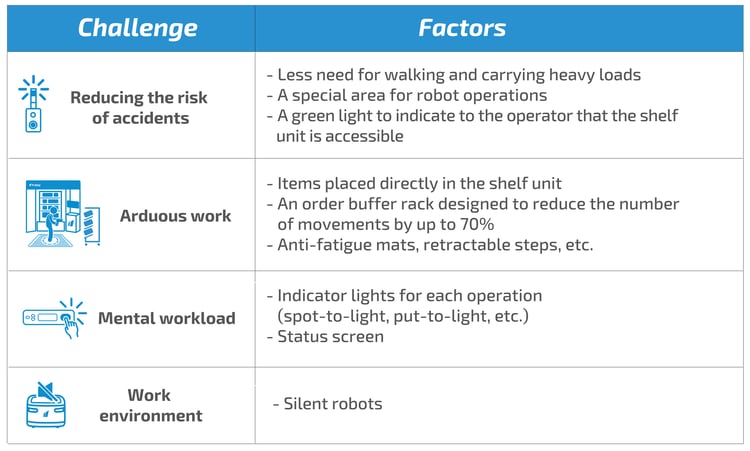The Great Resignation in logistics: a tangible reality
Twenty-three percent of the active US population quit their posts in 2021. Far from losing steam, the phenomenon known as the Great Resignation (or the Big Quit) has even accelerated in 2022. Workers are quitting their jobs without knowing, in many cases, where they’ll be working next.

The historically low unemployment in the US (3.7% as of August 2022) has long led experts to think that Europe would be spared the Great Resignation. But joblessness has dropped significantly in Europe as well (6.6% in August across the eurozone), and the pace of resignations continues to increase, reaching 520,000 per quarter in France, including 470,000 permanent full-time employees, according to the latest figures from the French employment ministry. That’s 20% higher than in 2019.
As a result, it’s proving difficult to recruit personnel for jobs that use low-skilled workers and can’t be done remotely. The percentage of vacant posts is rising steadily. The average vacancy rate across the euro zone is 3.2%, which masks some very dramatic differences. Virtually all SMEs are finding it difficult to hire workers because of a shortage of applicants.
And the supply chain is being directly affected. Like the catering sector and building and civil engineering, logistics is unfortunately facing an image problem among young people in particular.
Warehouse managers are becoming increasingly worried about these resignations and the problem of finding workers as their peak season approaches (Black Friday, Christmas).
Priority: better working conditions
So what can be done to keep workers on the job?
The biggest demand, naturally, is wage increases. In Europe, inflation is increasing by the day and already stands at 10%. Rising energy and food costs pose concrete problems for staff. At more remote warehouses, the high cost of petrol is reducing operator purchasing power even further.
But while it may be needed, a general wage increase will not necessarily be enough to reduce the quit rate and make firms more attractive. Moreover, it quickly becomes extremely costly.

That’s why it’s essential to think about improving working conditions as well. Order pickers in a warehouse may walk up to 12 to 15 kilometres per day. That walking combined with the heavy loads workers must carry are causing a spike in musculoskeletal disorders. Medical problems increase absenteeism. And arduous work increases the risk level: manual handling (including outside of warehouses) accounts for half of all workplace accidents.
To improve working conditions, we need to address a potentially extensive range of factors. Businesses can start by proposing work schedules that are better tailored to individual circumstances, or by establishing a company mobility plan. To have a significant impact, they will undoubtedly have to revamp the way they organise their work. In each case, the measures they take will need to preserve economic efficiency. And their success will depend largely on support from management.
Goods to Man automation for addressing working conditions
Order pickers in a warehouse spend half their time looking for items. With a Goods to Man system, it’s the products that move. Say goodbye to time wasted wandering the aisles because of a complicated coding system.
 Preparation of orders in the Decathlon warehouse - © Scallog /Decathlon
Preparation of orders in the Decathlon warehouse - © Scallog /Decathlon
Automation can require a considerable investment and significantly disrupt work habits. France’s national agency for improving working conditions, known as ANACT, recommends that companies test automation projects first before adopting them on a full scale.
It was precisely with the aim of combining flexibility and scalability that, at Scallog, we chose a system based on mobile shelf units. It’s a very affordable solution that yields a quick ROI, so it’s accessible even to SMEs.
Automation provides an opportunity to review how tasks are organised and redefine the workstation, with the goal of tackling every challenge:

Combining all these factors can improve ergonomics substantially. And that’s a concern shared by Scallog and its customers. The laboratories at Boiron have drawn on virtual reality to help them define various workstation parameters.
Although Goods to Man automation drastically reduces operator walking distances, it increases the risk posed by repetitive movements. Fortunately, the Scallog workstation is suited to a wide range of tasks, like conducting a cycle count, managing returns or restocking
.
Specially designed to be mastered quickly by operators, the Scallog workstation also promotes versatility. So it’s easier to rotate operators regularly among different workstations: forwarding orders to the packaging area, performing handling tasks in a non-automated section of the warehouse or consolidating orders.
Modernising your facility to attract and retain new hires
By modernising your warehouse with Goods to Man automation, you can keep employees healthy, reduce absenteeism and enhance each task. Thanks to the gains in efficiency (picking is three times faster), you reduce the need for temporary labour during peak periods. As a result, you can offer higher-quality work.
In addition to improving loyalty among your current staff, a modernised facility will give your warehouse a more positive image, which in turn will make hiring easier and even – especially if you’re a 3PL provider –help you attract more customers.




Laisser nous votre commentaire